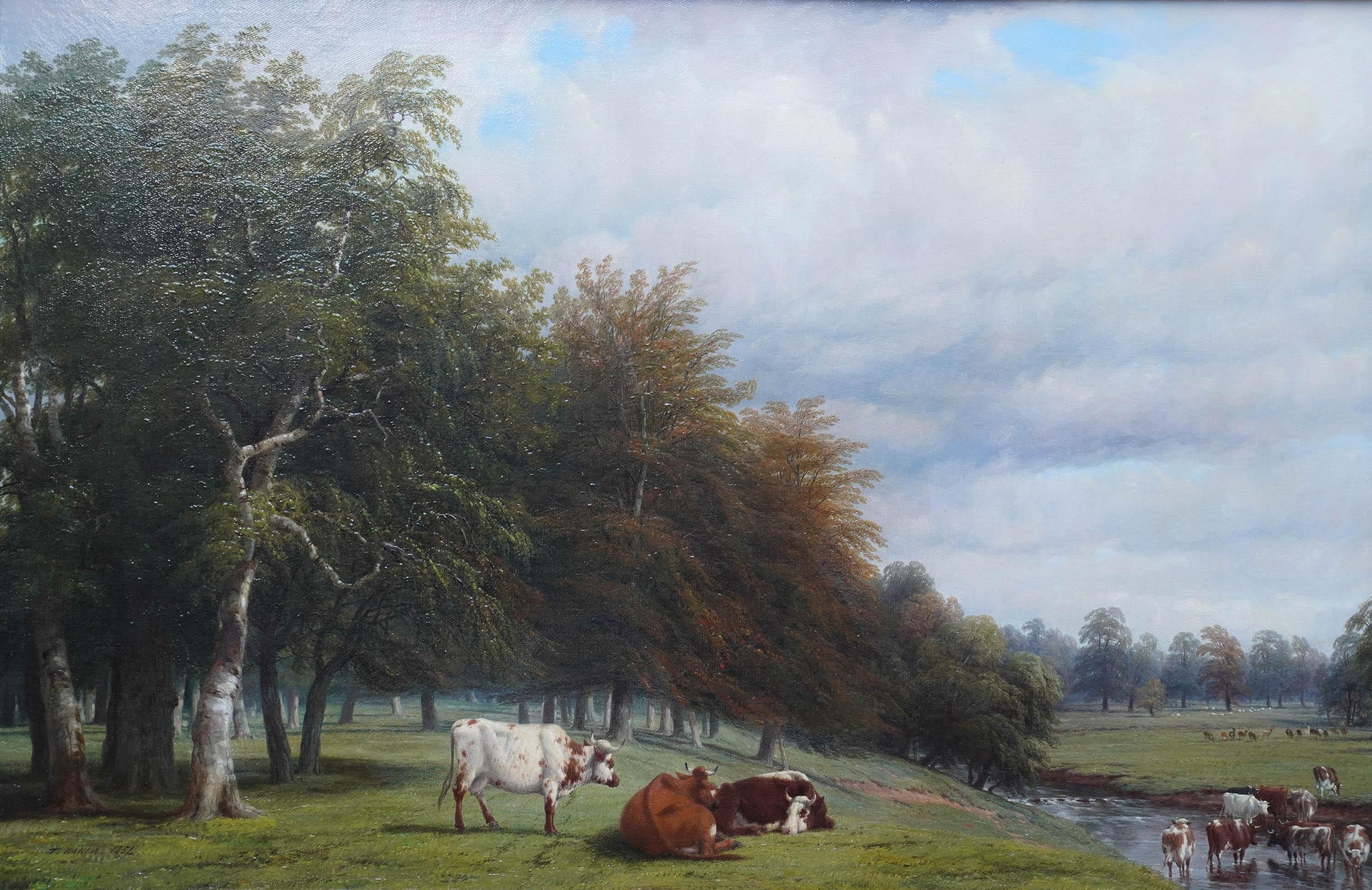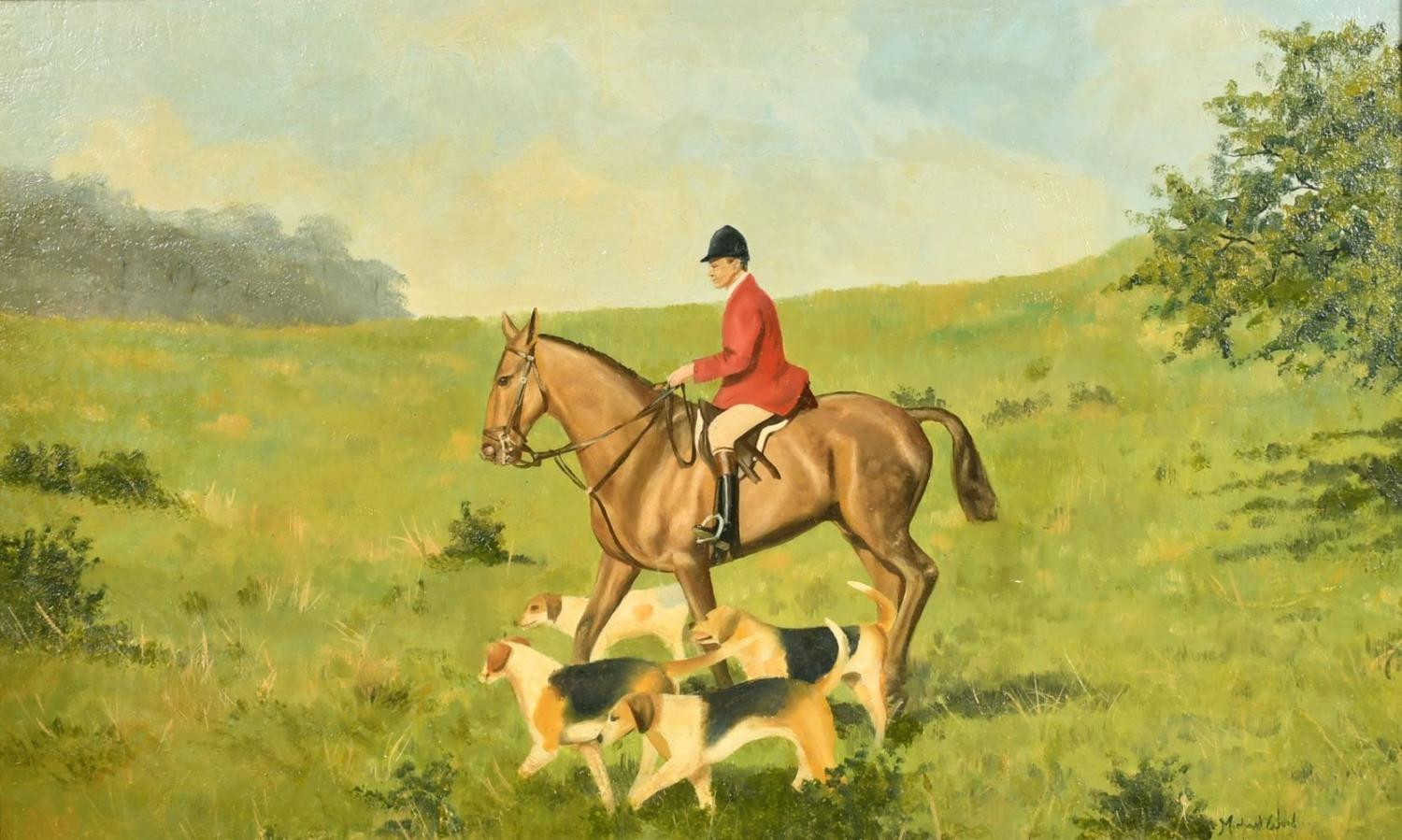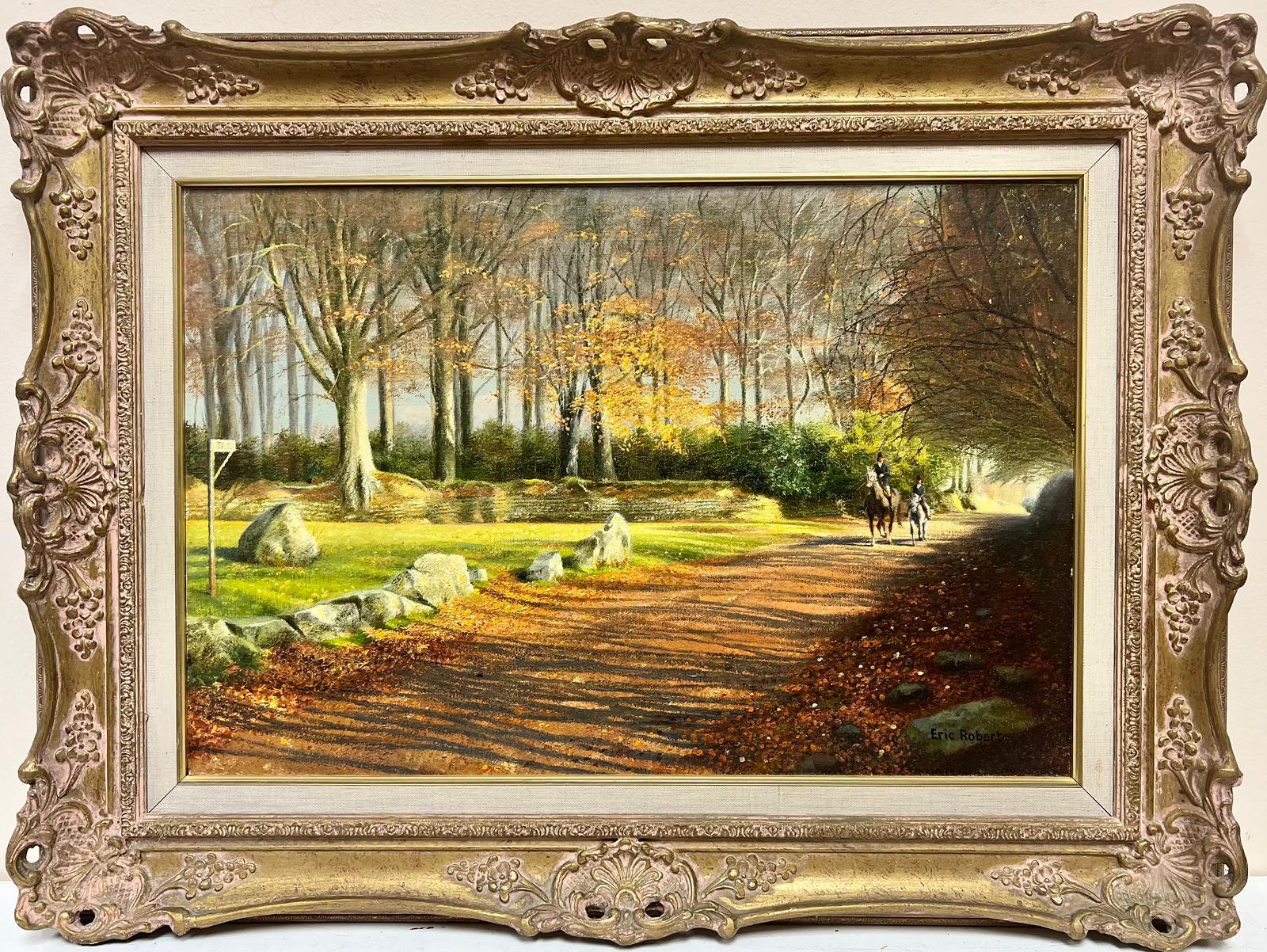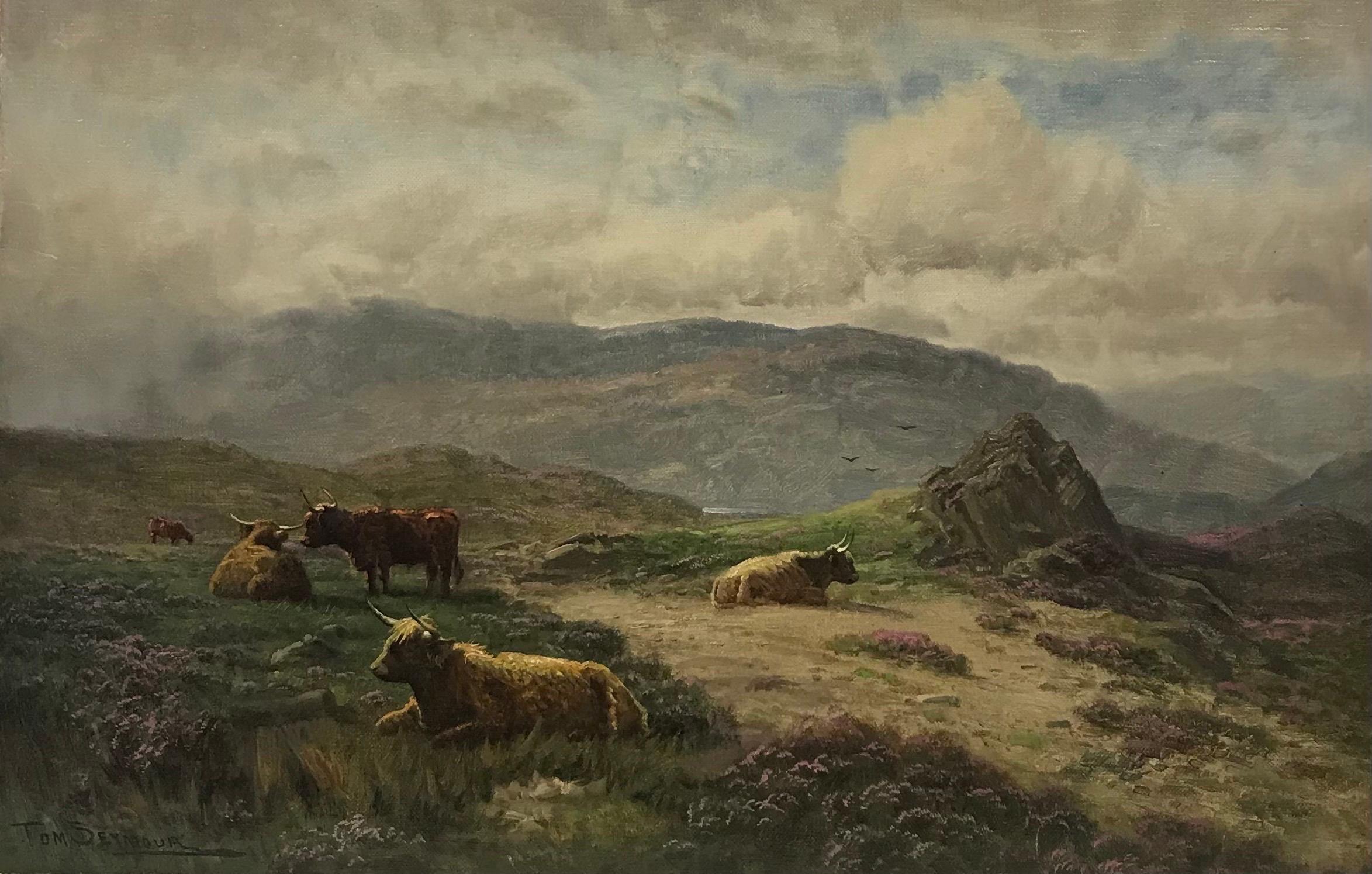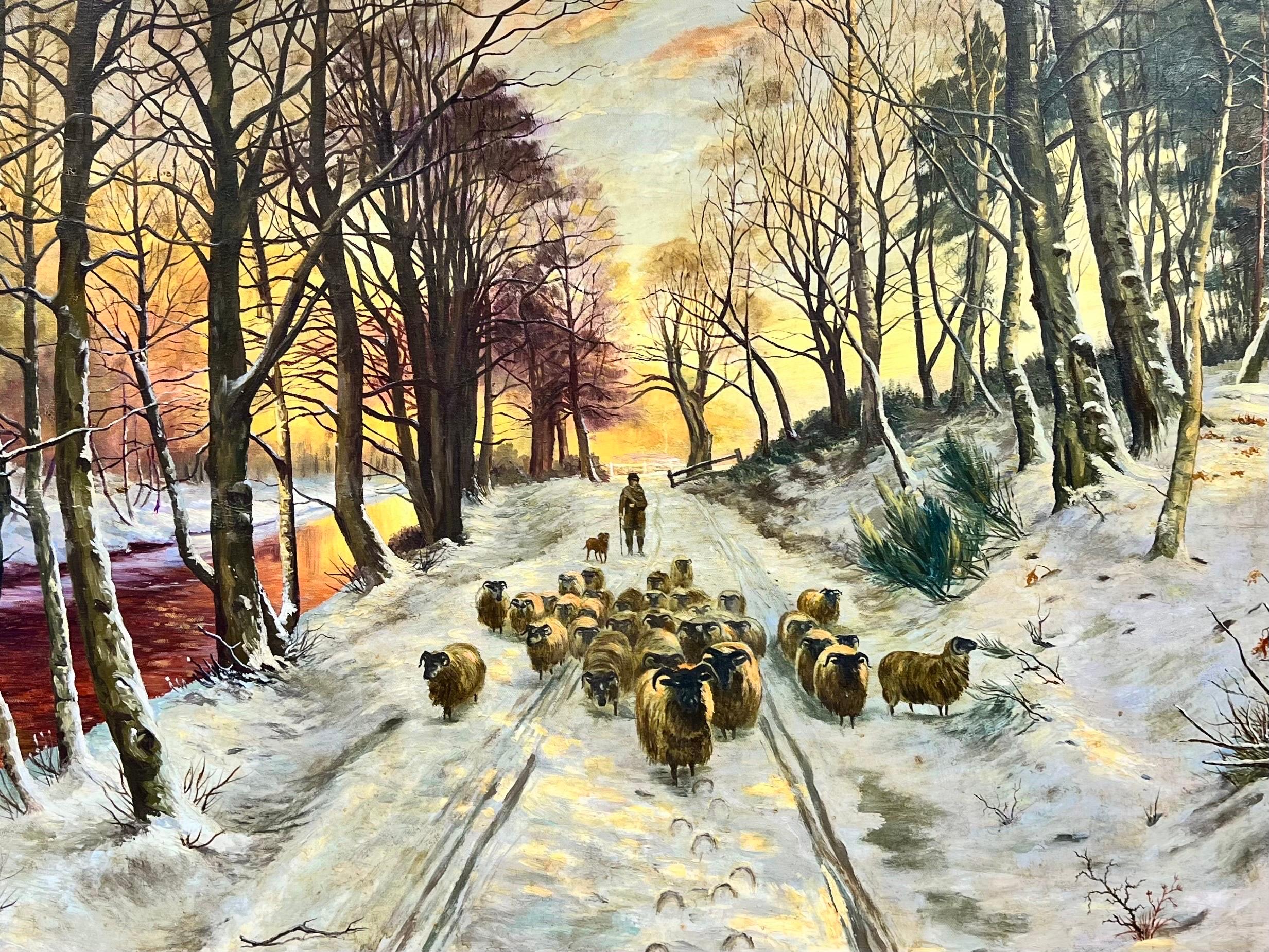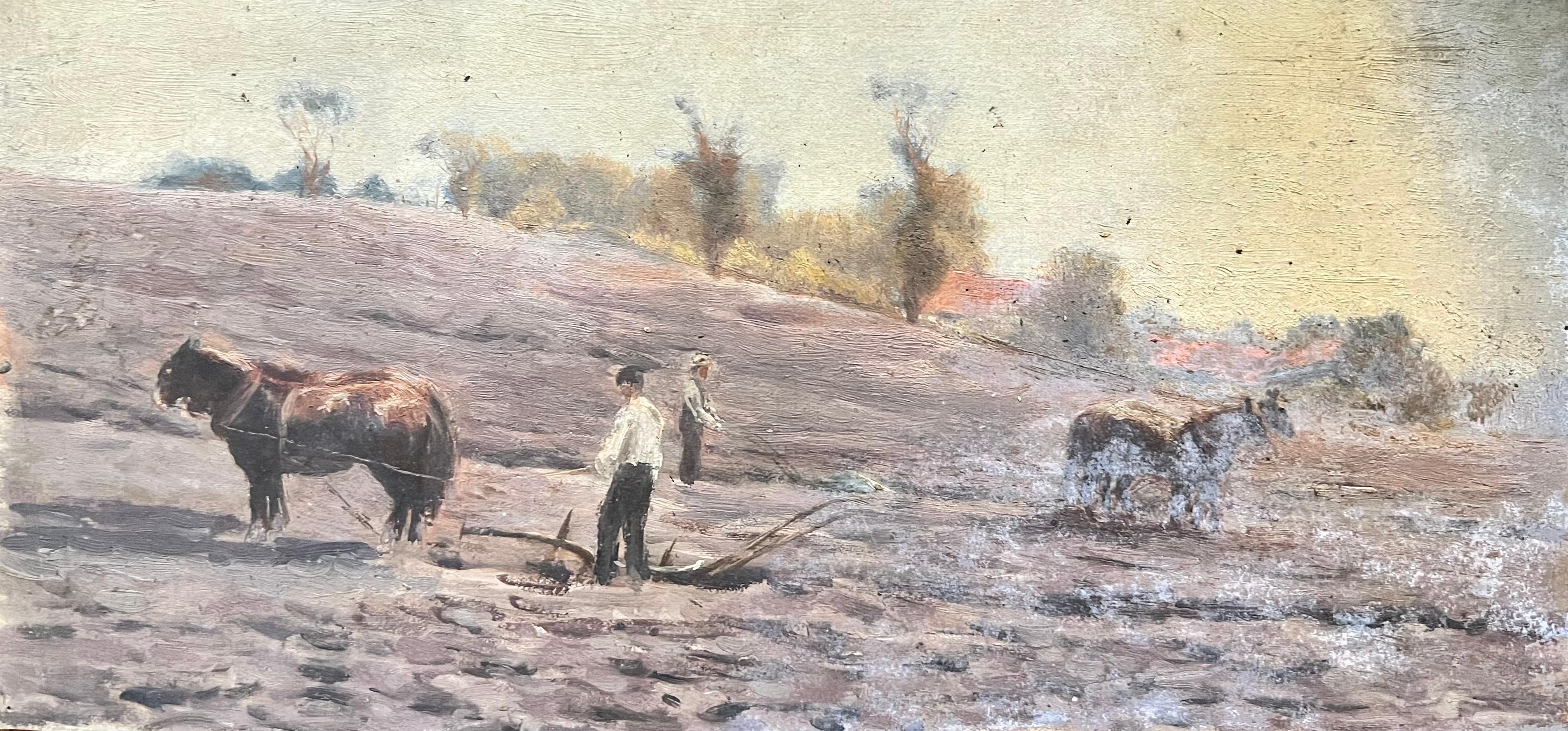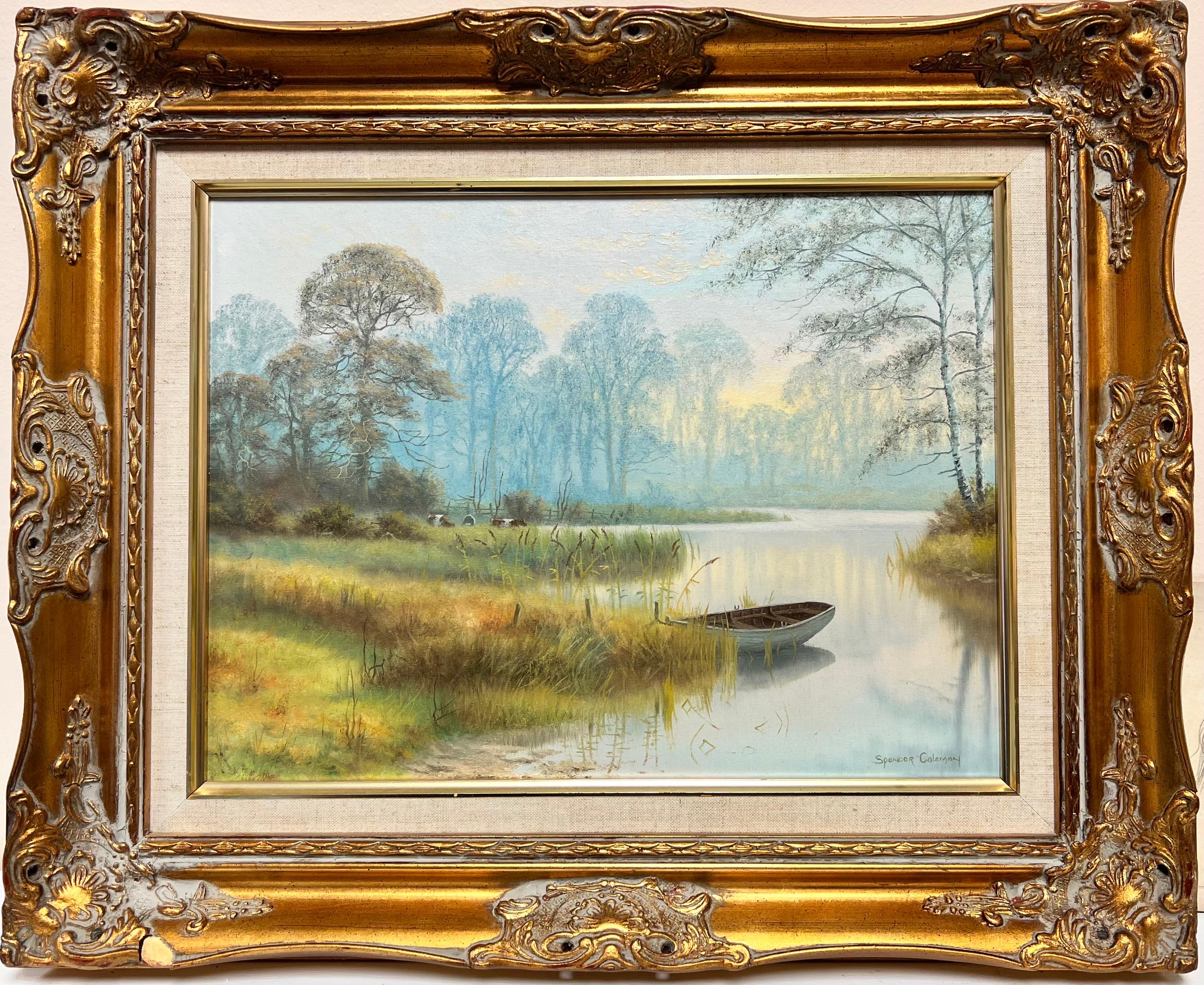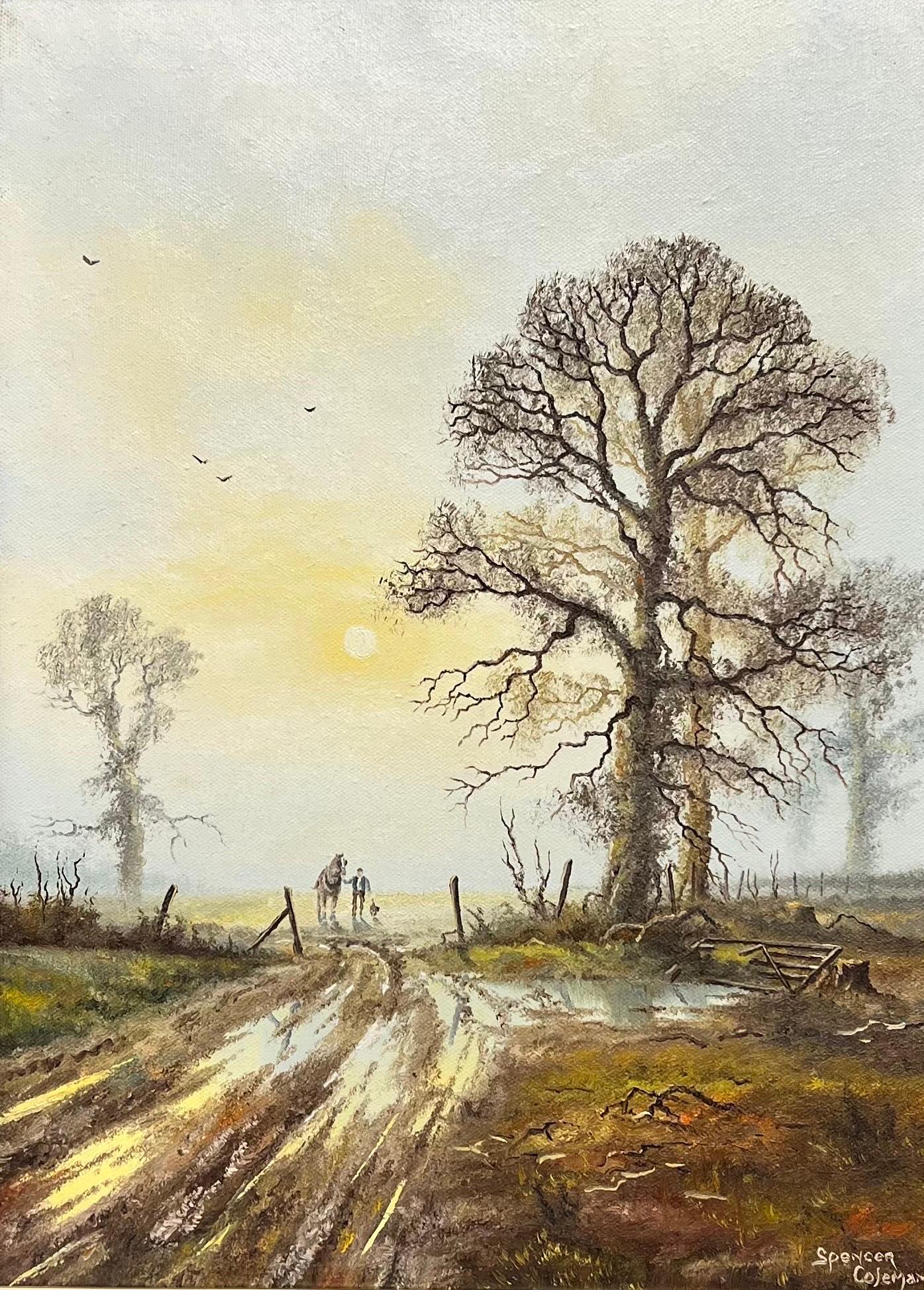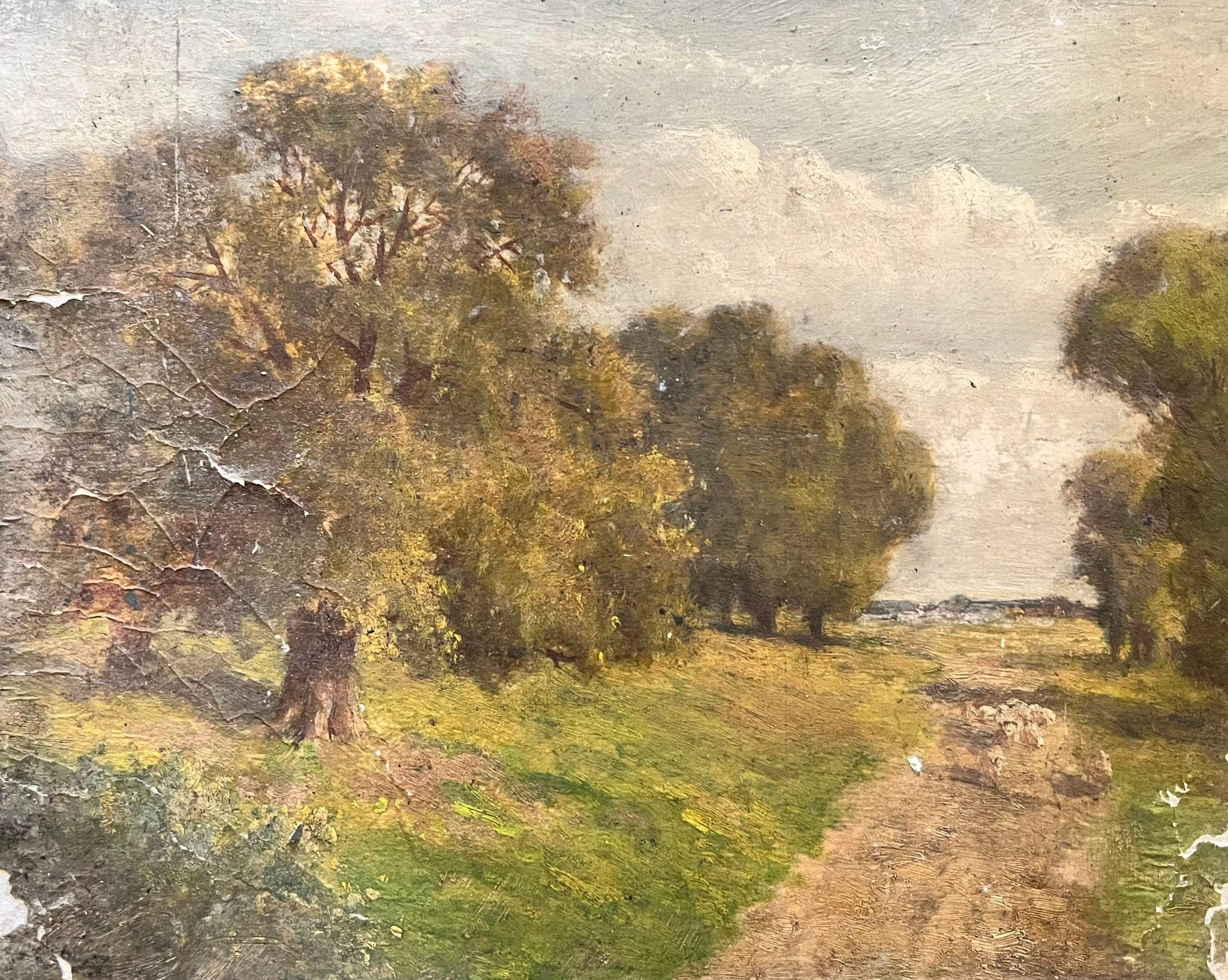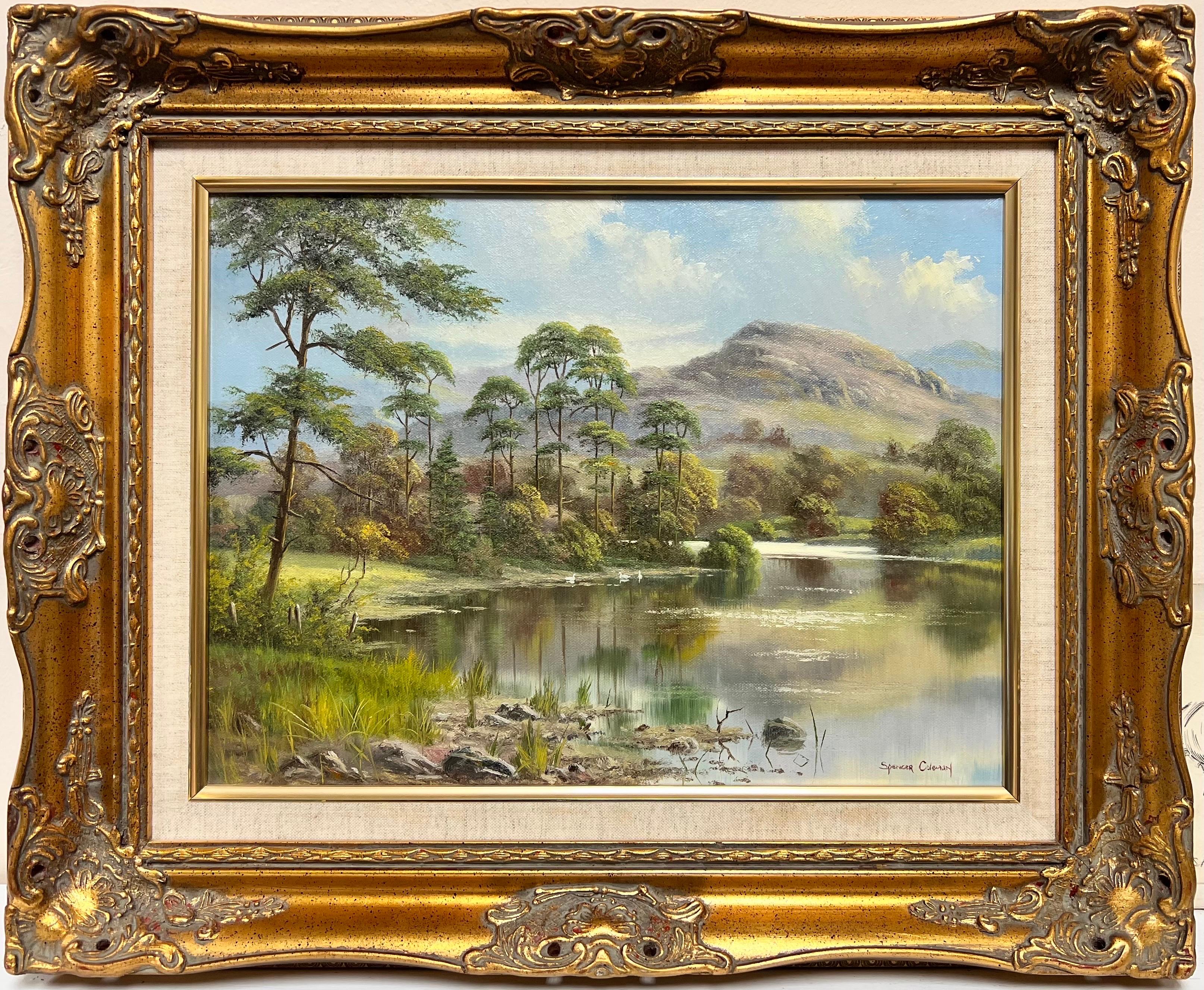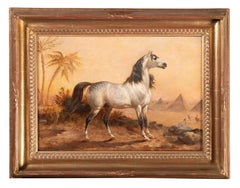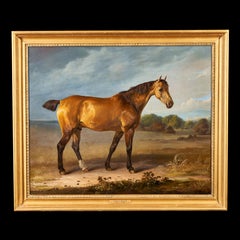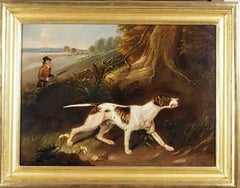
A huntsman with pointer in a landscape
View Similar Items
Want more images or videos?
Request additional images or videos from the seller
1 of 8
Philip ReinagleA huntsman with pointer in a landscape
$7,645.04List Price
About the Item
- Creator:Philip Reinagle (1749 - 1833)
- Dimensions:Height: 22 in (55.88 cm)Width: 28 in (71.12 cm)
- Medium:
- Movement & Style:
- Period:
- Condition:
- Gallery Location:Stoke, GB
- Reference Number:1stDibs: LU446314280192
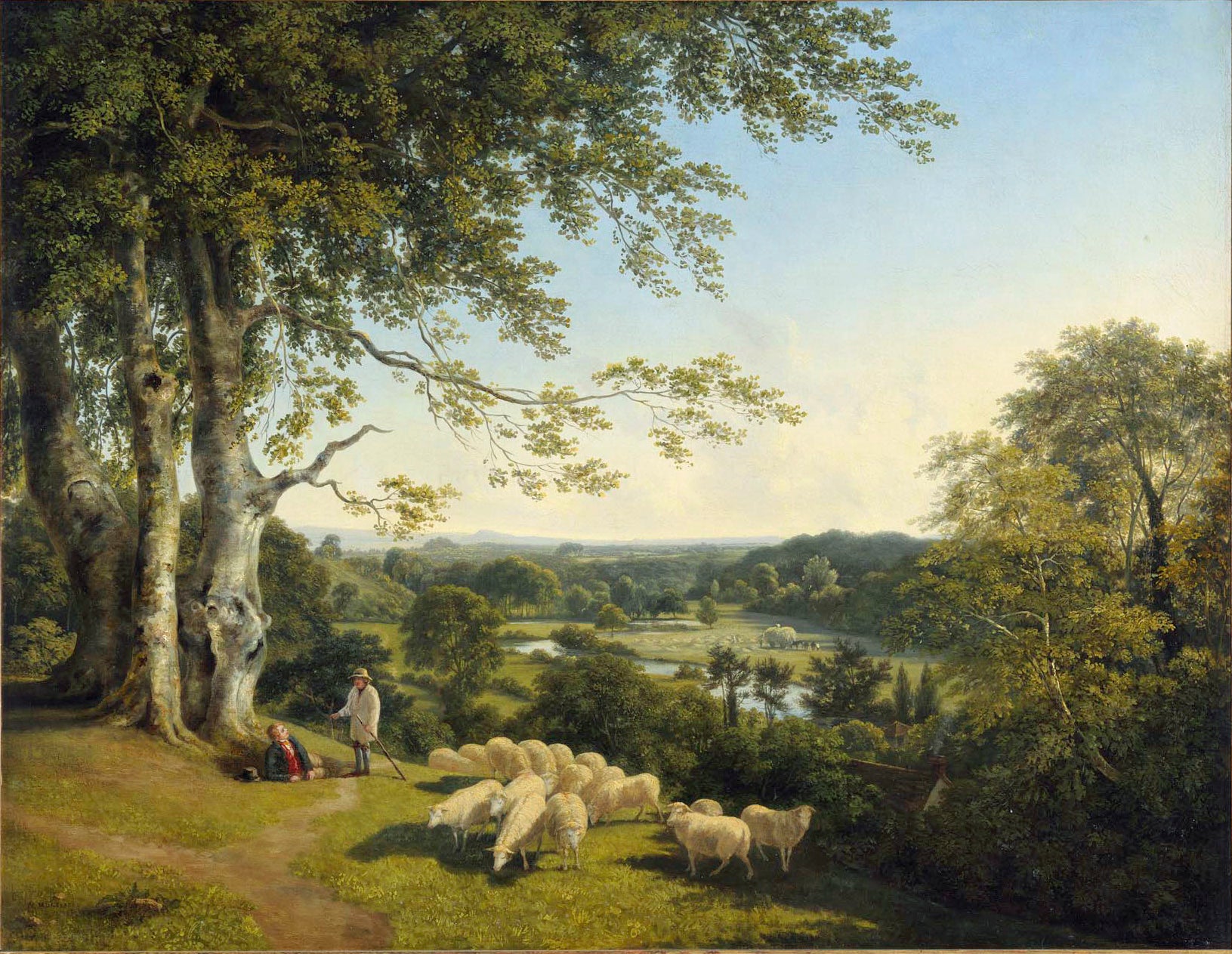
About the Seller
5.0
Recognized Seller
These prestigious sellers are industry leaders and represent the highest echelon for item quality and design.
Platinum Seller
Premium sellers with a 4.7+ rating and 24-hour response times
Established in 2009
1stDibs seller since 2016
173 sales on 1stDibs
Typical response time: 1 hour
Associations
LAPADA - The Association of Arts & Antiques DealersInternational Confederation of Art and Antique Dealers' AssociationsThe British Antique Dealers' Association
Authenticity Guarantee
In the unlikely event there’s an issue with an item’s authenticity, contact us within 1 year for a full refund. DetailsMoney-Back Guarantee
If your item is not as described, is damaged in transit, or does not arrive, contact us within 7 days for a full refund. Details24-Hour Cancellation
You have a 24-hour grace period in which to reconsider your purchase, with no questions asked.Vetted Professional Sellers
Our world-class sellers must adhere to strict standards for service and quality, maintaining the integrity of our listings.Price-Match Guarantee
If you find that a seller listed the same item for a lower price elsewhere, we’ll match it.Trusted Global Delivery
Our best-in-class carrier network provides specialized shipping options worldwide, including custom delivery.More From This Seller
View AllTwo gentlemen on hunters with greyhounds in a landscape
By William Joseph Shayer
Located in Stoke, Hampshire
William Joseph Shayer (1811-1892)
Two gentlemen on hunters with greyhounds in a landscape
signed and dated 'W. Shayer./ 1836' (lower left)
Oil on canvas
Canvas size - 12 x 15 1/2 in
...
Category
19th Century Victorian Animal Paintings
Materials
Oil
An Arabian stallion, in a landscape, with pyramids and riders beyond
By George Henry Laporte
Located in Stoke, Hampshire
Attributed of George Henry Laporte (c. 1799–1873)
An Arabian stallion, in a landscape, with pyramids and riders beyond
Oil on canvas
Canvas size - 13 1/2 x 20 in
Framed size - 20 x 2...
Category
19th Century Victorian Animal Paintings
Materials
Oil
Mr Ward on Quicksilver, the hunt beyond
By Richard Barrett Davis
Located in Stoke, Hampshire
Richard Barrett Davis (1782-1854)
Mr Ward on Quicksilver
Oil on canvas
Canvas Size - 25 x 30 in
Provenance
with Ackermann & Son, London;
where purchased by the present owner.
Born...
Category
19th Century Victorian Animal Paintings
Materials
Oil
A bay hunter in a landscape, a view of Windsor castle beyond
By Edmund Bristow
Located in Stoke, Hampshire
Edmund Bristow (1787-1876)
A bay hunter in a landscape, Windsor castle beyond
Signed with initials lower left
Oil on canvas
Canvas Size 22 1/2 x 27 1/2 in
Framed Size 27 x 32 in
Pro...
Category
19th Century Victorian Animal Paintings
Materials
Oil
Pheasant Shooting & Snipe Shooting
By Samuel Alken Jnr.
Located in Stoke, Hampshire
Samuel Alken Jnr (1784-1825)
Snipe Shooting
Pheasant Shooting
Both signed 'S. Alken'
A pair, Oil on canvas
Painting Size - 12 x 16 1/2 in
Framed Size - 17 x 21 1/2 in
Samuel Alken J...
Category
19th Century Victorian Landscape Paintings
Materials
Oil
Snipe Shooting
By Samuel Alken Jnr.
Located in Stoke, Hampshire
Samuel Alken Jnr (1784-1825)
Snipe Shooting
Signed 'S. Alken'
Oil on canvas
Painting Size - 12 x 16 1/2 in
Framed Size - 17 x 21 1/2 in
Samuel Alken Junior (1784–1825)
Samuel Alken ...
Category
19th Century Victorian Landscape Paintings
Materials
Oil
You May Also Like
Cattle Grazing in a Wooded Landscape - British Victorian art oil painting
By Thomas Baker of Leamington
Located in London, GB
This lovely British Victorian oil painting is by noted 19th century landscape artist Thomas Baker of Leamington. It was painted on 18th September 1854 as a special commission. The co...
Category
1850s Victorian Animal Paintings
Materials
Oil
Young Deer in Summer Scottish Highland Glen by Pool of Water
Located in Cirencester, Gloucestershire
Artist/ School: Scottish School, 20th century
Title: Young deer roaming in a Scottish summers glen next to a pool of water. Very atmospheric work.
M...
Category
20th Century Victorian Landscape Paintings
Materials
Oil
$1,153 Sale Price
30% Off
Huntsman on Horseback with Hounds, Fine British Sporting Art Oil Painting
Located in Cirencester, Gloucestershire
Artist/ School: Michael Wood, British 20th century, signed
Title: A huntsman mounted with four hounds at foot in a landscape
Medium: oil painting on can...
Category
Mid-20th Century Victorian Landscape Paintings
Materials
Oil
$1,359 Sale Price
30% Off
Fine British Oil Painting Horses Walking in Autumn Light, Impressive Frame
Located in Cirencester, Gloucestershire
Artist/ School: Signed by Eric Roberts and inscribed verso
Title: titled verso
Medium: oil on canvas on board, framed
Framed: 22 x 29 inches
Painting: 15 x 22 inches
Provenance: ...
Category
Mid-20th Century Victorian Landscape Paintings
Materials
Oil
$1,459 Sale Price
30% Off
Fine Victorian Scottish Oil Painting Highland Cattle Misty Mountain Landscape
Located in Cirencester, Gloucestershire
Artist/ School: by Tom Seymour (British 1844-1904), signed lower front
Title: 'Highlanders', a fine Victorian oil painting depicting these majestic Highla...
Category
19th Century Victorian Landscape Paintings
Materials
Oil
$1,668 Sale Price
30% Off
Huge Scottish Signed Painting Sheep in Winter Snowy Sunset Landscape
Located in Cirencester, Gloucestershire
Artist/ School: Scottish School, 20th century, after Joseph Farquharson (1846-1935)
Title: Sheep in Snowy Winter Landscape
Medium: oil on canvas, fra...
Category
20th Century Victorian Landscape Paintings
Materials
Oil
$1,962 Sale Price
30% Off

